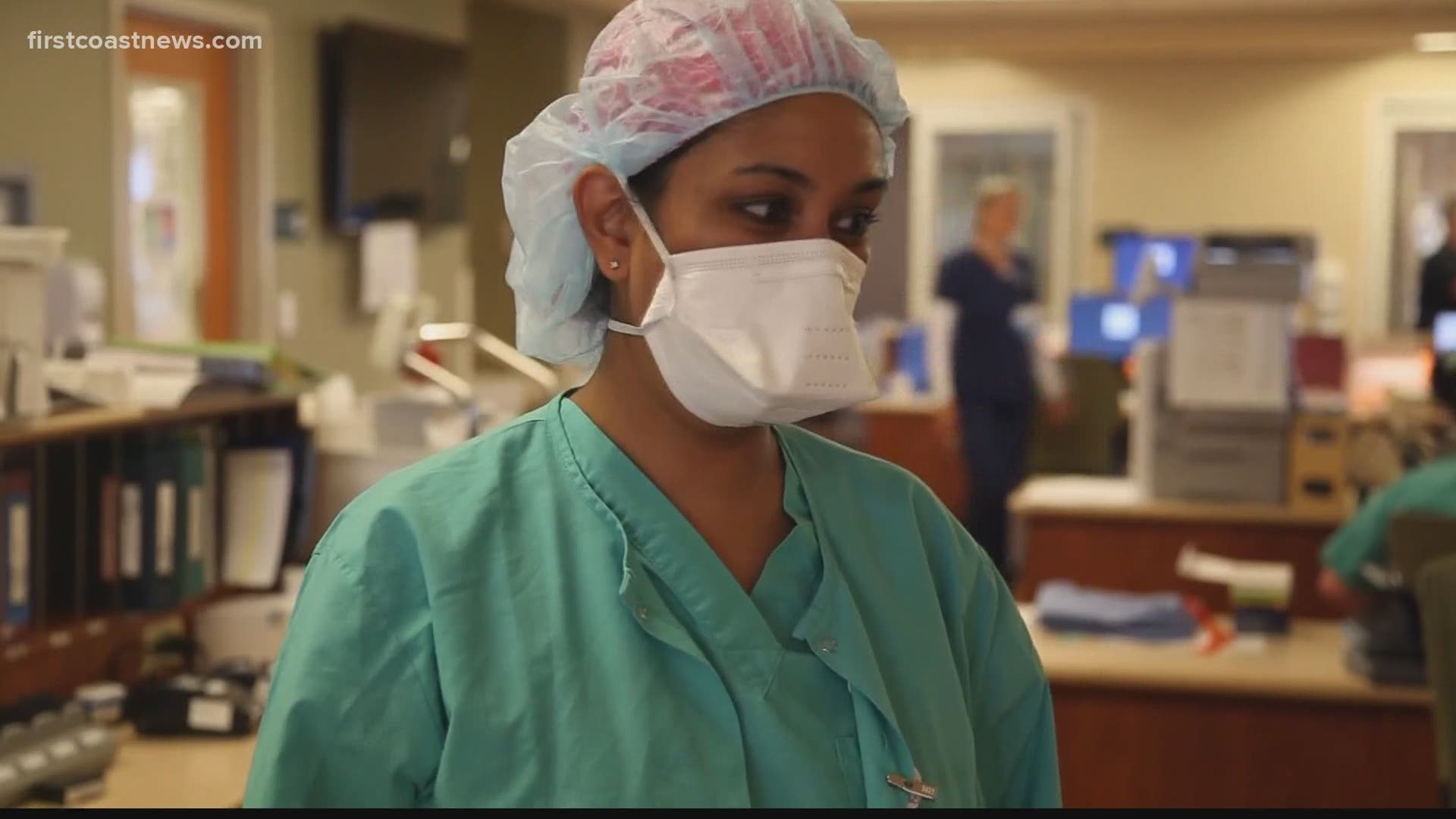ST. AUGUSTINE, Fla. — With the national shortage of N95 masks for medical personnel, some hospitals are testing ways to sanitize the masks in order to re-use them.
But does it work?
Flagler Hospital in St. Augustine has enough N95 masks for now, but the national shortage is in sight.
"We are planning for that shortage," said Don Crist, Flagler Hospital’s Vice President of Operations. He said the hospital has been testing different methods to sterilize N95 masks to see if they can be re-used.
On its website, the Centers for Disease Control and Prevention says N95 masks “are not approved for routine decontamination and reuse as a standard of care.” But the option may need to be “considered as a crisis capacity strategy to ensure continued availability.”
The CDC says research indicates three methods “show the most promise.” Flagler Hospital has tested two of those methods on a small number of masks.
First, it has used a hydrogen peroxide vapor to kill germs on the masks in special disinfecting machines.
"We have had really good success with hydrogen peroxide," Crist said. "100 percent no growth on all of our experimental masks so far."
The second method Flagler Hospital tried uses ultraviolet light on the masks. Other First Coast hospitals are trying this method too. Crist says some of their masks still had germs on them after they went through that process, possibly because the light did not hit the entire mask.
"We’re not saying the ultraviolet light is not capable of killing the germs," Crist said. "We’re saying in our process, it’s not good enough for us because whatever it is, there may be some pieces of the mask that either is not getting exposed to the ultraviolet light in our process and there is continued growth [of germs]."
Crist said Flagler Hospital tested an ultraviolet method using technology from the company Xenex.
Melinda Hart with Xenex told First Coast News, "LightStrike technology [from Xenex] has been tested and shown to be effective in reducing a surrogate for SARS-CoV2 on PPE material that is very similar to face mask material."
"Many hospitals have reached out to us about how they might be able to use LightStrike robots for this purpose," she said. "We are honored that some facilities are innovating and attempting to reduce the risk of disease transmission by disinfecting masks with our LightStrike pulsed xenon UV technology. We have conducted extensive testing and we are confident that pulsed xenon UV is able to safely reduce the amount of contamination on face masks -- which is far better than no disinfection at all (which is what many healthcare workers are being forced to do)."
When asked about some medical professionals having doubts about the ultraviolet technology's effectiveness to disinfect masks, Hart said, "If the medical professionals mean that the technology cannot sterilize (100% eradication of all contamination) masks, that is accurate. Xenex has lab data showing that LightStrike robots are effective in reducing viral load, and that is the hospitals' goal when they are disinfecting masks with our LightStrike technology. Being able to safely reduce the amount of contamination on a face mask with a LightStrike robot is much better than no disinfection at all."
She continued, "Those medical professionals may also be familiar with/referring to (low intensity, single spectrum) mercury UV light disinfection technology, which is a different kind of UV disinfection than what our LightStrike robot provides."
The third face mask decontamination method the CDC mentions involves moist heat. Flagler Hospital has not tested it.
Crist said, "I have read about it. One of the studies seemed to indicate deterioration in the masks pretty early after a couple sterilizations with moist heat, but we have not personal experience here."
Flagler Hospital has set aside the masks that have been completely sterilized so far, in case it needs to use them again.
Hart said, "This is an emergency use situation in absolutely unprecedented circumstances. Face masks are designed for single use. The primary focus should be on securing an adequate supply of PPE for our healthcare workers so that disinfection and re-use of masks become unnecessary."

